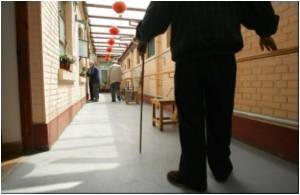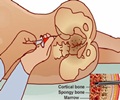
And now two studies have shown that these drugs could lead to bone loss in different ways too.
Both research teams, one at the University of Texas Southwestern Medical Center and the other at the Fritz-Lipmann Institute in Germany, have said that this new molecular understanding of what happens to bone could lead to the design of drugs with fewer side effects.
They also provide new insight into the basic biology of bone.
"People taking a high dose of glucocorticoids can be pretty sick with rheumatoid arthritis or severe asthma, for example, and in that case their systemic fracture risk doubles. For a young person, that might be OK because their risk is very low to start, but, as you become older, it's a real problem," said Jan Tuckermann of the Fritz-Lipmann Institute.
In fact, osteoporosis is just one of a range of glucocorticoid's side effects, all of which look something like normal symptoms of aging, he added.
Advertisement
"Our goal is to find a way to reduce the side effects," said Tuckermann.
Advertisement
Yihong Wan of UT Southwestern said that bone is a rather dynamic tissue-it is constantly being remodelled through a careful balance between the activities of bone-building osteoblasts and bone-resorbing osteoclasts.
Now, researchers have found that glucocorticoids act on the osteoblast side of that equation.
Studies in mice showed that animals lacking glucocorticoid receptors in their osteoblasts didn't show the same bone loss that glucocorticoids normally bring.
In the second study, the researchers wanted to understand why long-term use of rosiglitazone in patients with diabetes make bones more fragile in diabetic patients, who are already at increased risk of bone fractures as it is.
The insulin-sensitizing drug is known to act through the so-called peroxisome proliferator-activated receptor g (PPARg), a receptor that plays diverse roles in fat cell development, lipid metabolism and insulin sensitivity.
Emerging evidence suggested that PPARg also has an important job in bones.
Earlier studies found that it suppresses the bone-building activities of osteoblasts.
At the same time, an earlier showed that PPARg speeds up the differentiation and activity of osteoclasts, to break down more bone.
Further experiments by researchers revealed that rosiglitazone's side effects on bone involve a transcriptional coactivator known as PGC1b, which coordinates with another molecular actor known as ERRa. ]
Strikingly, they report, animals lacking PCG1b in their osteoclasts grow completely resistant to rosiglitazone-induced bone loss.
Wan noted that the effects of the drug on osteoblasts seem to occur through a different intermediary.
"There is an explanation for why this diabetes drug causes bone loss. Based on this knowledge, better drugs can be developed,' concluded Wan.
The study is published in the June issue of Cell Metabolism.
Source-ANI










